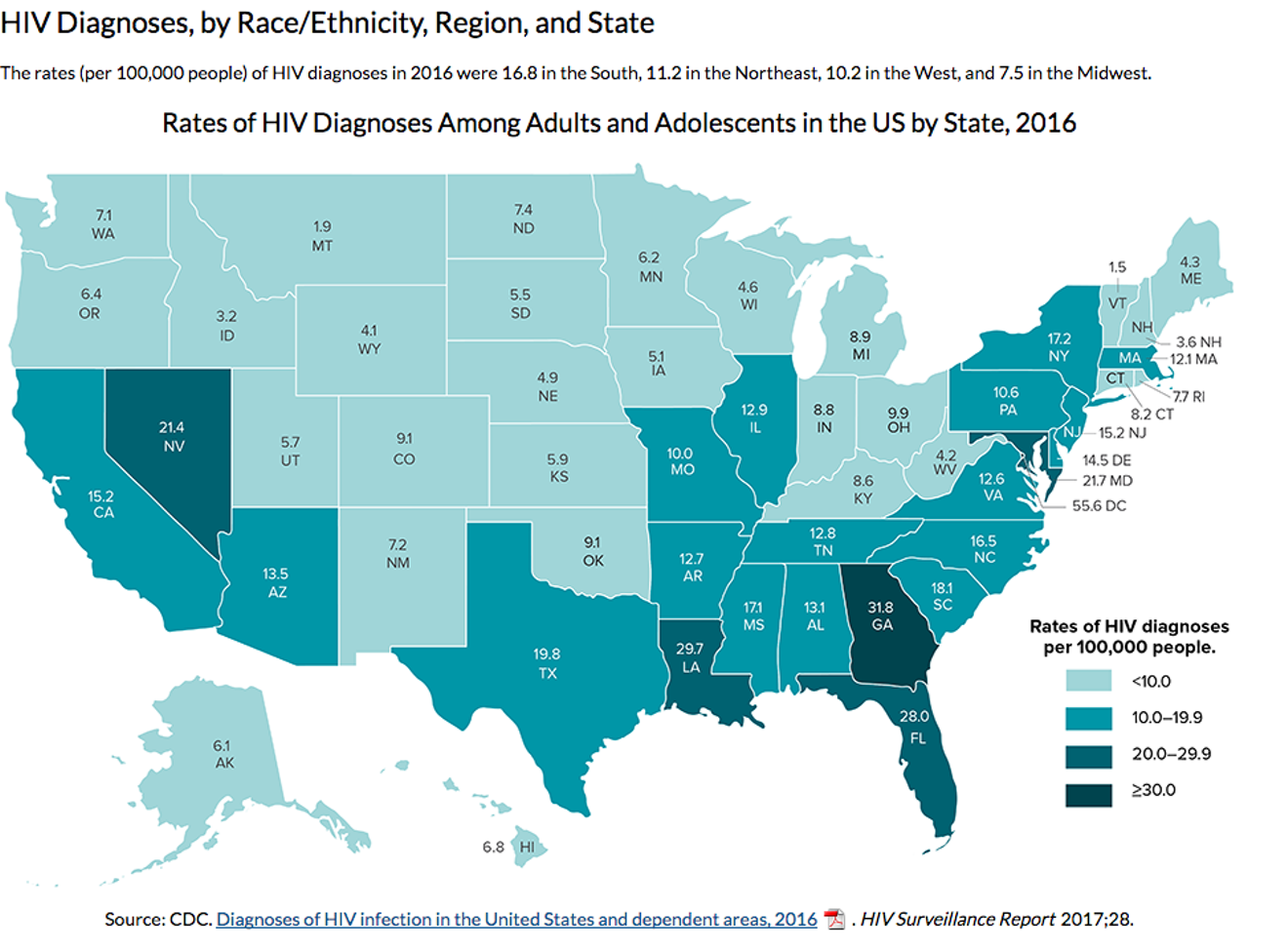The CDC says a majority of those unknowingly infected lived in Texas and other Southern states, where cultural factors like fear and discrimination may contribute to delays in diagnosis. The Dec. 1 report, which used data from 2015, also states that half of the people diagnosed with HIV contracted it three years before — earlier than the patients knew. More than 82,000 people live with HIV in Texas, and state health authorities say 18,000 Texans don’t realize they have it.
An estimated 16,387 people were living with HIV in Dallas County in 2015, a 56 percent increase since 2005, according to a Dallas County Health and Human Services report. The county also reported that cases were disproportionately higher among African Americans.
Dallas continues to top lists for metropolitan areas with the most HIV infection rates, said Cece Cox, CEO of Resource Center, a local nonprofit that provides programs for LGBTQ individuals and people affected by HIV and AIDS. Part of the problem, she says, is cultural.
“They don’t want to know, don’t think that they are at risk,” she says. “A lot of rural areas are not enlightened about prevention. There is not enough conversations about safe sex and how we take care of ourselves.” Cox points out that the number of new cases being diagnosed is dropping.
To determine how many people were living with HIV at the end of 2015, the CDC used data reported to its National HIV Surveillance System from 50 states and the District of Columbia. It found that among the 1.1 million people living with HIV in the U.S. in 2015, 15 percent were unaware of their infection.
“For HIV treatment to be effective in reducing HIV incidence, infections need to be diagnosed as quickly as possible,” according to the Dec. 1 report.
The Resource Center was founded in 1983 in response to discrimination, Cox says. “The fight [was] for civil rights, health and survival,” she says. “[There was] so much fear and stigma. They were afraid to treat people.”
Cox says that, like other organizations in the area, the Resource Center does outreach in the community and testing at an Oak Lawn clinic. It provides education through advocacy at health conferences, community events and sometimes apartment complexes. Most important: Get tested if you’re experiencing the risk factors.
For those infected, HIV and AIDS are no longer considered a death sentence. It's a manageable condition, says Andrew Powaleny, director of public affairs for Pharmaceutical Research and Manufacturers of America. The trade organization partnered with The AIDS Institute and released a report showing that there are 52 medicines and vaccines — 32 antiretrovirals and antivirals, 16 vaccines and four cell therapies — to treat and prevent HIV in various phases of development.“They don’t want to know, don’t think that they are at risk. A lot of rural areas are not enlightened about prevention." – Cece Cox, CEO, Resource Center
tweet this
“We are in a new era of HIV treatment and preventative treatment,” Powaleny says. “But there are still patients who don’t know. It is important that they are consulting with physicians and ensure where possible that they look toward preventive methods.”
Cox mentions one preventative method called the PrEP protocol. It’s a prescription medication called Pre-Exposure Prophylaxis that prevents people from getting infected with HIV. A user takes a single pill once per day, ingesting a combination of emtricitabine and tenofovir disoproxil fumarate. The website doitright.org says the drug reduces a patient's risk of contracting HIV by 90 percent but requires a HIV test every three months to make sure it’s still working.
Cox says it’s for people who are with an HIV-infected partner or experiencing other risk factors for contracting the virus. “But I advise people to use condoms because they are effective,” she says.












